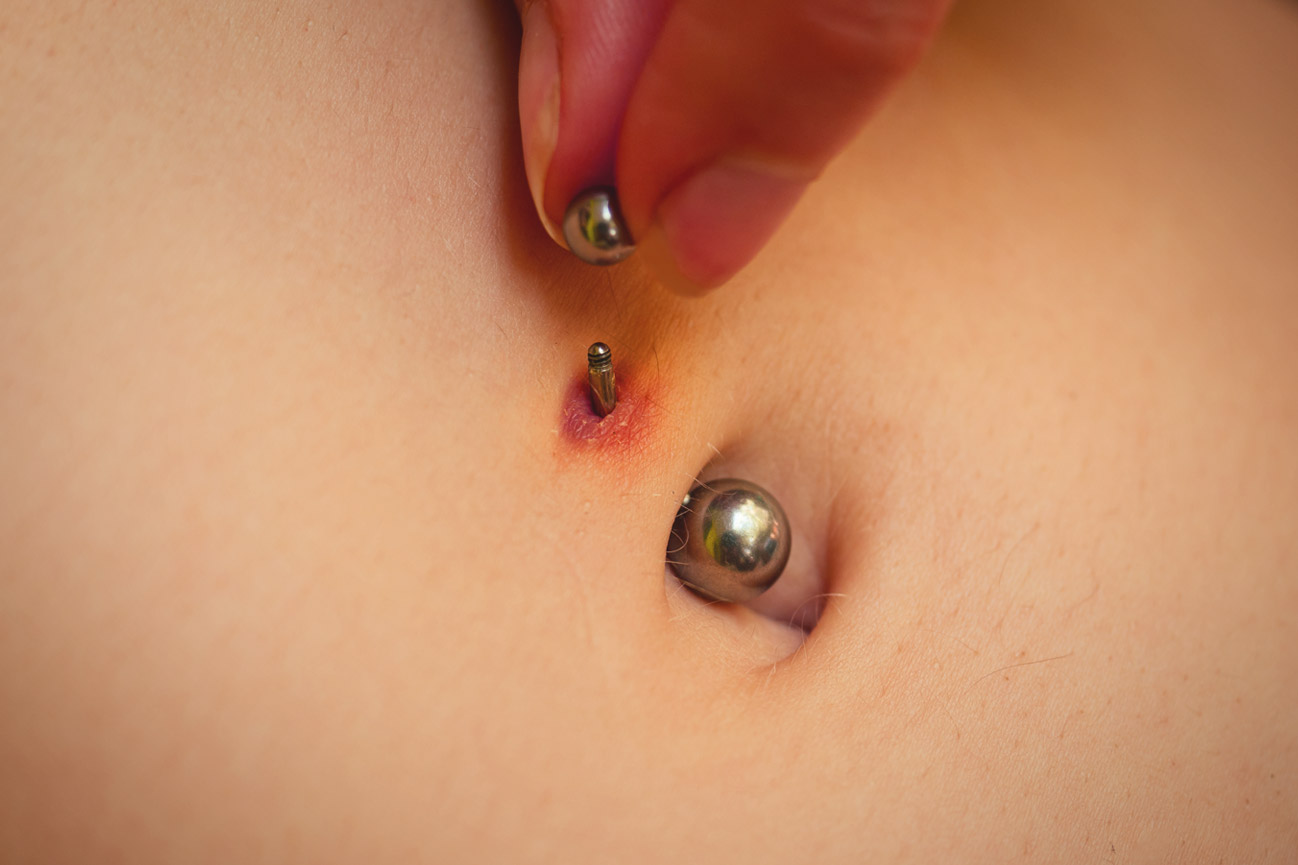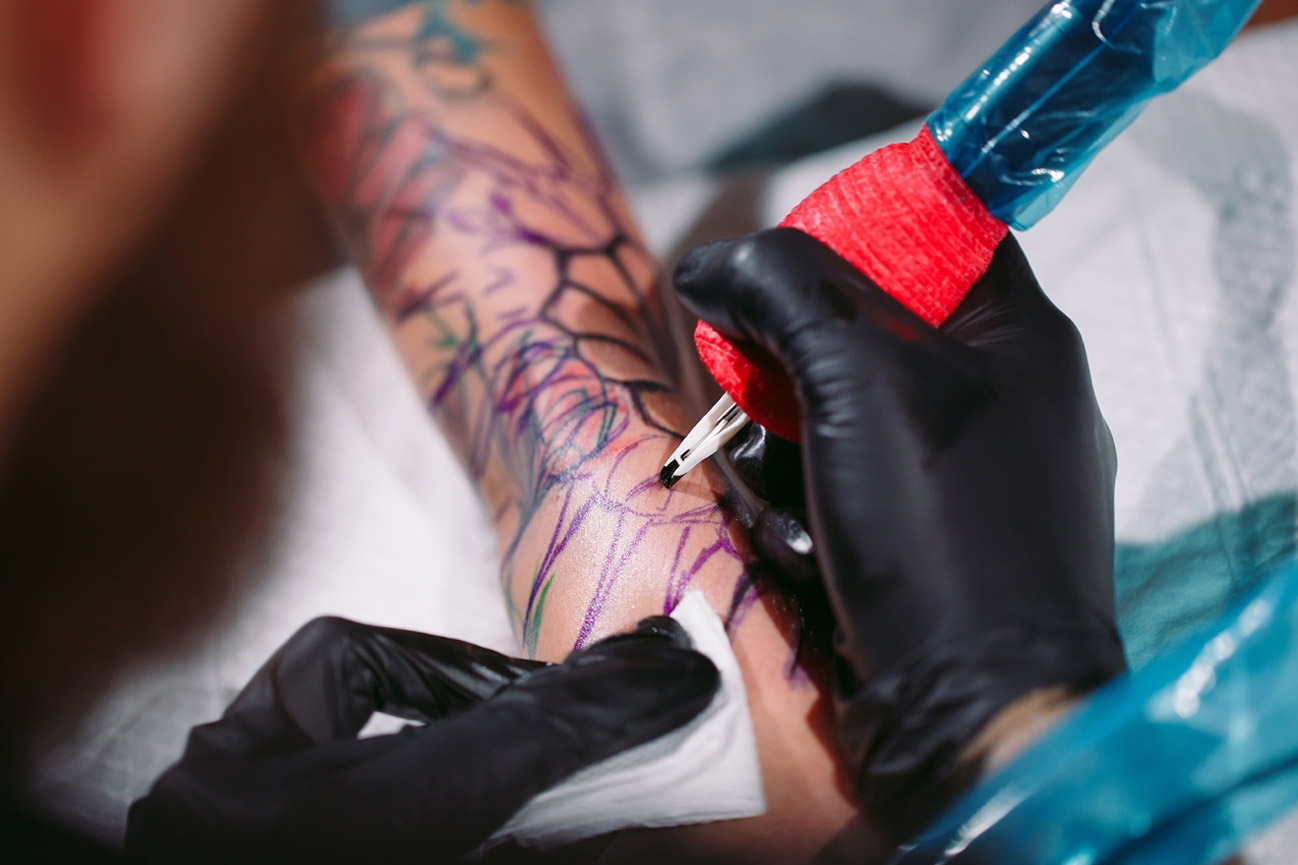Just got your dream tattoo and wondering if you can ruin it while you sleep? You’re not alone. Every night for the next few weeks, your fresh ink faces potential damage from pressure, friction, and bacteria lurking in your bedsheets.
Here’s what many people don’t realize: how you sleep with a new tattoo can make or break your healing process. Poor sleep habits can extend healing time from 2 weeks to over a month, increase infection risk, and even cause permanent damage to your artwork.
At Platinum Ink Tattoo & Body Piercing, we’ve guided numerous clients through successful healing since 2002. After seeing too many beautiful tattoos damaged by preventable sleep mistakes, we’re sharing the exact steps our professional tattoo artists recommend to ensure perfect healing every time.
Why Your Sleeping Habits Matter More Than You Think
Your fresh tattoo is essentially an open wound that needs protection, especially during the 6-8 hours you spend unconscious each night. Research shows that keeping pressure off a fresh tattoo while sleeping can help reduce irritation and support faster healing, though individual experiences vary based on tattoo size and location.
During sleep, your body releases growth hormones crucial for tissue repair. But here’s the catch: direct pressure or contaminated environments can completely derail this natural healing process.
The scary statistics: Infection rates from tattoos range from 0.5% to 6%, with poor hygiene during healing being the leading cause. Many of these infections happen at night when people unknowingly expose their tattoos to bacteria through dirty sheets or improper positioning.
The 3 Critical Stages of Tattoo Healing (And What to Expect Each Night)
Understanding your tattoo’s healing timeline helps you adjust your sleep routine accordingly:
Days 1-3: The Oozing Stage
- Your tattoo will leak plasma, blood, and excess ink
- Pain may disrupt your normal sleep patterns
- Biggest risk: Bacterial infection from contaminated bedding
Days 4-14: The Scabbing Stage
- Protective scabs form over the tattooed area
- Itching intensifies, especially at night
- Biggest risk: Accidentally picking scabs while sleeping
Weeks 3-6+: The Peeling Stage
- Dead skin flakes off naturally
- Reduced sensitivity allows normal sleeping positions
- Biggest risk: Premature fading from continued poor habits
Sleep Position Strategies That Actually Work
For Arm Tattoos
Sleep on the opposite side to avoid direct pressure. If your tattoo is on your right arm, sleep on your left side or back. Use a body pillow between your arms to prevent rolling onto the fresh ink.
For Leg Tattoos
Elevate the tattooed leg with a pillow to reduce swelling and prevent sheets from sticking. Sleep on your back when possible, or on the side opposite to your tattoo.
For Back Tattoos
This is the trickiest placement. Sleep on your stomach or side for the first few nights, using clean towels on your pillow to catch any oozing. Avoid tight-fitting pajamas that might stick to the tattoo.
For Chest Tattoos
Sleep on your back with your upper body slightly elevated using extra pillows. This reduces swelling and prevents the tattoo from pressing against the mattress.
The Do’s: 7 Non-Negotiable Rules for Safe Sleep
1. Clean Your Tattoo Before Bed (Every Single Night)
Gently wash with fragrance-free soap and pat dry with a clean paper towel. This removes plasma buildup that can stick to sheets and cause damage when you move.
2. Use Fresh, Dark-Colored Bedding
Change to clean sheets nightly for the first week. Dark colors hide any ink or fluid transfer, and fresh bedding prevents bacterial buildup.
3. Apply the Right Amount of Aftercare Product
Use only a thin layer of your artist-recommended ointment. Too much can clog pores and trap bacteria against your skin.
4. Cover Only When Necessary
For the first 1-2 nights, use a breathable wrap like second-skin products only if your artist recommends it. Remove after 8-24 hours to allow proper air circulation.
5. Wear Loose, Breathable Clothing
Choose soft, clean pajamas that won’t stick to your tattoo. Avoid anything tight or made from synthetic materials that trap heat and moisture.
6. Keep Pets Out of Your Bed
Animal hair and dander significantly increase infection risk during the vulnerable first week of healing.
7. Get Quality Sleep (7-9 Hours)
Adequate rest boosts your immune system and accelerates healing. Take over-the-counter pain relief if approved by your artist to ensure uninterrupted sleep.
The Don’ts: Mistakes That Ruin Tattoos (And How to Avoid Them)
Never Sleep Directly on Your Fresh Tattoo
This is the #1 cause of healing complications we see at our studio. Direct pressure can:
- Cause ink to transfer to sheets
- Disrupt scab formation
- Create permanent patchy areas
- Increase infection risk by 300%
Don’t Use Regular Plastic Wrap Long-Term
While some artists recommend initial wrapping, never sleep with plastic cling film beyond the first night. It traps moisture and creates a breeding ground for bacteria.
Avoid Sharing Your Bed Initially
Partners can accidentally bump or put pressure on your tattoo during sleep. Consider separate sleeping arrangements for the first 3-4 nights if possible.
Don’t Ignore Warning Signs
If you wake up with excessive redness, swelling, or pus, don’t try to self-treat. Contact your artist or a healthcare provider immediately.
What the Latest 2025 Research Reveals About Tattoo Sleep Safety
New federal regulations introduced in 2025 emphasize stricter hygiene standards, including specific guidance on preventing infections during sleep. Studies now show that contaminated bedding is responsible for 23% of tattoo-related infections.
The tattoo aftercare market has exploded to USD 194.5 million in 2025, driven by growing awareness of proper healing techniques. Modern breathable wraps and specialized sleep products can reduce healing time by up to 40% compared to traditional methods.
| Healing Factor | Traditional Method | 2025 Best Practices | Improvement |
| Initial healing time | 3-4 weeks | 2-3 weeks | 25% faster |
| Infection risk | 3-6% | 0.5-2% | 70% reduction |
| Color retention | 85% | 95%+ | 10% better |
| Sleep comfort | Poor (first week) | Manageable | Significant |
Ready to Heal Like a Pro?
Protecting your investment starts the moment you leave our studio. By following these evidence-based sleep strategies, you’re giving your tattoo the best possible chance to heal beautifully.
Remember: every tattoo and person heals differently. What works for your friend might not work for you. That’s why we provide personalized aftercare instructions tailored to your specific tattoo and skin type.
If you’re considering getting quality body jewelry for your healed piercings or planning your next tattoo, our experienced team can guide you through the entire process with the same attention to detail we bring to aftercare.
Frequently Asked Questions
Can I sleep without covering my tattoo after the first night? Generally yes, as long as your sheets are clean and you’re not sleeping directly on the tattoo. Always follow your specific artist’s instructions, as recommendations vary based on tattoo size, location, and your skin type.
How long should I avoid sleeping on my tattoo? Most tattoos can handle light contact after 3-5 days, but avoid direct pressure for at least 2 weeks. Listen to your body – if it’s painful, adjust your position.
What should I do if my tattoo sticks to my sheets? Never pull or rip it away. Gently wet the area with clean water to soften any stuck material, then carefully separate. This usually indicates you need better positioning or a protective barrier.
Is it normal for my tattoo to feel hot while sleeping? Some warmth is normal for the first few days as part of the healing process. However, excessive heat combined with redness or swelling may indicate infection – contact your artist immediately.
Can I use a heating pad or electric blanket on a new tattoo? No, avoid all heat sources for at least 2 weeks. Extra heat can increase swelling, promote bacterial growth, and potentially damage the healing skin.
Should I sleep with my tattoo elevated? Yes, elevation helps reduce swelling, especially for arm and leg tattoos. Use pillows to keep the tattooed area above heart level when possible.
At Platinum Ink Tattoo & Body Piercing, we’ve been Austin’s trusted body art destination since 2002. Our experienced team provides comprehensive aftercare guidance to ensure your tattoo heals perfectly. Have questions about your healing process? Contact us for personalized advice from artists who truly care about your results.




